Designing your own tattoo sleeve can be an exciting and rewarding experience. If you are looking for a creative way to express yourself, a custom sleeve tattoo is a great option. This step-by-step guide will walk you through the process of designing your own tattoo sleeve, from conceptualizing your ideas to finding the right artist to turn your vision into reality. With the right guidance and dedication, you can create a unique tattoo sleeve that reflects your personal style and expresses your individual identity.
Contents
Gather Inspiration
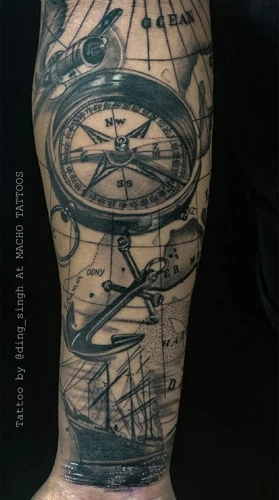
Before you start designing your own tattoo sleeve, it’s important to draw inspiration from other designs. Take the time to browse tattoo designs and gather ideas. Consider the elements you like, such as the style, colors, symbols, and shapes. You don’t want to copy another artist’s work, but you can use their designs to help create an original piece that reflects your personality. Look through magazines, websites, and social media for inspiration, and try to identify the elements that catch your eye. Once you have a few ideas, you can begin to plan how to create your own tattoo sleeve design.
Choose Your Theme
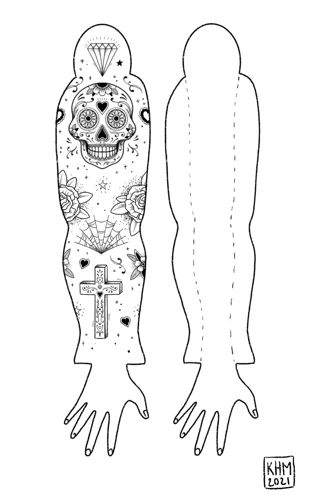
1. Tattoo sleeves are usually designed with a common theme in mind. This could be something related to your hobbies, interests, or beliefs.
2. Nature-inspired designs are popular for tattoo sleeves. These include images of flowers, trees, animals, and other natural elements.
3. You could also combine several different themes in your sleeve design. For example, you could have a sleeve with a combination of flowers, birds, and animals.
4. Some people choose to have sleeves with abstract designs. These could include shapes, patterns, and other elements that don’t necessarily have a particular meaning.
5. If you are looking for something more meaningful, consider having a sleeve that celebrates your faith or heritage. This could include symbols or images associated with your religion or culture.
6. You could also choose a sleeve design that is representative of your profession or interests. For example, you could have an artist’s palette or a musician’s staff in your sleeve design.
7. If you are looking for something more personal, consider designing a sleeve with images that are meaningful to you. This could include the names of family members, images of places you have visited, or symbols that represent important events in your life.
Sketch the Design

Start with a Simple Outline: To start designing your tattoo sleeve, begin by drawing an overall shape of the design you would like to create. Start with basic shapes and gradually add details to bring the design to life.
Add Details: Once you have a basic outline, begin to add details to the design. Consider adding elements such as flowers, animals, geometric shapes or other symbols that capture your style and express your personality.
Refine Your Sketch
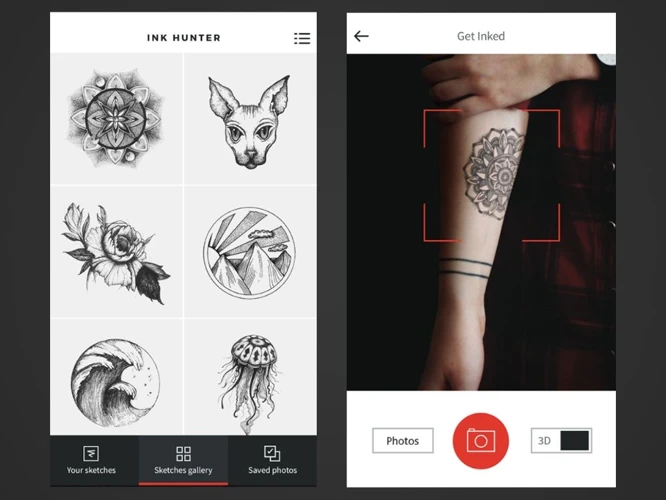
| Step | Description |
|---|---|
| 1 | Evaluate your sketch and decide which elements need improvement. |
| 2 | Look for ideas for improvement, such as changing the shape of elements, adding color, and making lines more detailed. |
| 3 | Redraw the elements that need improvement, and add color to any areas that need it. |
| 4 | Once you are happy with your refined sketch, you can move on to the next step in creating your tattoo sleeve. |
Once you have a basic sketch of your tattoo sleeve design, it’s time to refine it. Evaluate your sketch and decide which elements need improvement. Look for ideas for improvement, such as changing the shape of elements, adding color, and making lines more detailed. Redraw the elements that need improvement, and add color to any areas that need it. Once you are happy with your refined sketch, you can move on to the next step in creating your tattoo sleeve.
Choose Your Color Scheme

When designing a tattoo sleeve, the color scheme you choose is an important factor in creating a cohesive and visually appealing design. Consider the overall look you want to achieve, as well as the individual elements of the design. Colors that contrast and complement each other will add depth to your sleeve. Also, think about the symbolism or meaning behind the colors you choose.
Cool Colors such as blues, greens and purples can evoke a feeling of calm and relaxation. These colors can be used to create a peaceful and serene atmosphere.
Warm Colors such as reds, oranges and yellows can create a sense of vibrancy and energy. These colors can be used to create a lively and exciting atmosphere.
Neutral Colors such as black, white and grey can be used to create a more subtle and understated look. These colors can be used to create a balanced and harmonious atmosphere.
Once you have chosen your color scheme, you can begin to add other elements to your sleeve design. Remember to take your time and have fun with the creative process.
Find Placement for Your Design
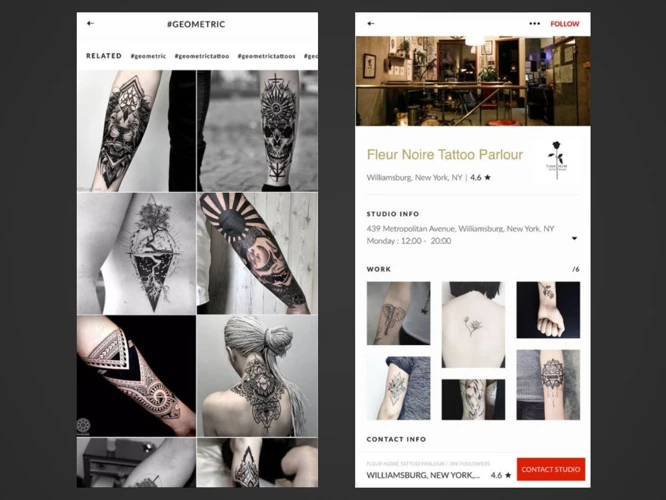
- Choose the area on your body you want to place the tattoo sleeve. Consider the size of the tattoo, and make sure you have enough space for it.
- Think about how the tattoo sleeve will look on your body. Will it fit the shape of your body? How will the other tattoos on your body look in relation to the sleeve?
- Consider the visibility of the tattoo sleeve. Will it be on show, or will it be covered up most of the time?
- Choose a spot on your body that is easy to reach and maintain. Tattoo sleeves require regular touch-up sessions.
- Be aware of the pain associated with the placement of the tattoo sleeve. Each person has a different tolerance to pain.
- Take your time to decide on the placement of the tattoo sleeve. Once it is done, it is difficult to change the placement.
Find an Experienced Tattoo Artist
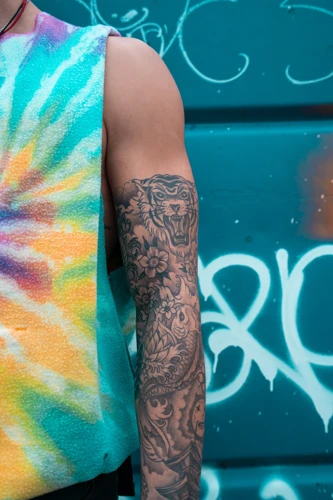
Finding an experienced tattoo artist is an important part of designing your own tattoo sleeve. It is important to find an artist who has experience in creating intricate and detailed designs.
Research
Start your search by researching local tattoo artists in your area. Look for artists who specialize in custom tattoos, as these artists will have the skill and experience to create the design you have in mind. Visit the artist’s website to view their portfolio and read customer reviews to get an idea of their work.
Consultation
Once you have found an artist who you think can create the design you have in mind, it is important to book a consultation. During the consultation, discuss your design with the artist, as well as any questions or concerns you have. It is important to make sure you feel comfortable with the artist before proceeding with the design.
Inspection
Before starting the tattoo, inspect the artist’s work station to ensure it is clean and well-maintained. Ask to see the artist’s license and make sure they are up-to-date on all safety protocols. This will ensure the tattoo process is done in a safe and sterile environment.
By finding an experienced tattoo artist, you can be confident that your design will be created with skill and precision. Taking the time to research and consult with the artist beforehand will ensure that your tattoo sleeve is designed to perfection.
Prepare for Your Appointment
- Research: Research tattoo parlors and artists in your area to find one that suits your style and budget. Ask for recommendations and look up reviews to make sure they are experienced and professional.
- Reference Materials: Gather reference materials such as photos, sketches, and magazine clippings to help you come up with an idea and provide your artist with inspiration.
- Consultation: Set up a consultation with the artist prior to your appointment. This is an important step because it will give you the opportunity to discuss your idea with the artist and make sure they are capable of executing it.
- Measurements: Measure the area where you want your tattoo to be placed. This will help the artist plan out the design and ensure it is the right size for your body.
- Budget: Estimate the cost of the tattoo based on the size and complexity of the design. Make sure you have enough money set aside to cover the cost of the tattoo and any additional expenses such as aftercare products or touch-ups.
- Appointment Time: Schedule your appointment as far in advance as possible. This will give you enough time to prepare and make sure everything is in order before you go in for the tattoo.
Frequently Asked Questions
What Materials Do I Need to Design My Own Tattoo Sleeve?
Paper: You will need paper to sketch out your designs. Choose a type that is suitable for drawing and can handle lots of erasing.
Pencils: You will need various pencils to draw your design. You may want to use a range of pencils such as 2H to B pencils to get different effects with your drawing.
Colored Pencils: You may want to use colored pencils to add color to your designs.
Eraser: You will need an eraser to make corrections and adjustments to your design.
Ruler: A ruler can be very useful for drawing straight lines and shapes.
Tattoo Transfer Paper: This is used for transferring your design onto the skin.
Tattoo Machine: You will need a tattoo machine to create the tattoo.
What Special Skills are Required to Design a Tattoo Sleeve?
Designing a tattoo sleeve requires an artistic eye, attention to detail, and a good understanding of color theory. To create a successful tattoo sleeve, you must possess a clear understanding of composition, negative space, and perspective. You should also have an understanding of the symbolism you are working with and how to incorporate it into your design. Additionally, familiarity with tattooing techniques and the ability to adapt to different styles is important.
What type of artwork is best suited for a tattoo sleeve?
- Abstract Art: Abstract art is a great way to create a unique and creative tattoo sleeve. Abstract art can be used to express feelings or emotions, or to portray a certain concept. Abstract art can also be used to add depth and texture to a tattoo sleeve.
- Geometric Art: Geometric art is perfect for creating a symmetrical and balanced tattoo sleeve. This type of art uses shapes, lines, and patterns to create a visually appealing tattoo sleeve. Geometric art can be used to create a tribal-inspired design, or can be used to incorporate symbols and meaningful images.
- Nature-Inspired Art: Nature-inspired artwork is perfect for creating a peaceful and calming tattoo sleeve. Nature-inspired artwork can be used to portray landscapes, flowers, trees, animals, and more. This type of artwork can be used to create a unique and beautiful tattoo sleeve.
- Symbolic Art: Symbolic art is perfect for creating a meaningful and personal tattoo sleeve. Symbolic art can be used to portray an idea, a belief, a memory, or an emotion. This type of artwork can be used to add meaning to a tattoo sleeve and to make it more meaningful.
- Photorealistic Art: Photorealistic art is perfect for creating a realistic and detailed tattoo sleeve. Photorealistic art can be used to create a realistic portrait, a landscape, or a representation of a symbol or object. This type of artwork is perfect for creating a tattoo sleeve that looks like a real-life image.
How long does it take to complete a tattoo sleeve design?
- Planning: Deciding on the tattoo sleeve design and gathering ideas can take anywhere from a few days to a few weeks.
- Drawing: Drawing the actual tattoo sleeve design can take anywhere from a few hours to a few days depending on the complexity and size of the design.
- Inking: The tattoo artist will take anywhere from a few hours to a few days to complete the inking, depending on the size and complexity of the sleeve.
- Healing: Generally, it takes anywhere from two to four weeks for the tattoo to heal completely.
What Types of Tattoos are Most Suitable for a Sleeve Design?
Cohesive imagery and larger designs are best for sleeve tattoos. Consider choosing a few main elements that work together in a unified composition. Look for bold and striking shapes, bright colors, intricate line work, and symbolic imagery. Including meaningful words or phrases can be an excellent addition to any sleeve design.
Conclusion
Designing your own tattoo sleeve is an exciting and creative process that requires patience and an open mind. It is important to have a clear vision, a good understanding of the design elements, and a reliable tattoo artist. With these considerations in mind, you can create a unique tattoo sleeve that will be a meaningful part of your identity for years to come.